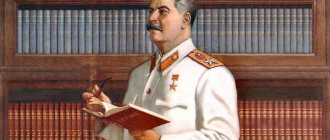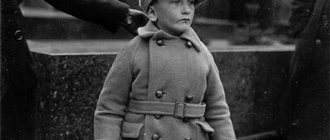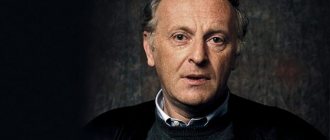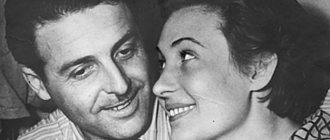The personality of the dictator and leader of all nations, Comrade Stalin, is known far beyond the borders of the countries of the former Soviet Union, but it is also unknown as widely as we still do not know many data from secret archives from the time of the NKVD to the present.
Joseph Vissarionovich was no exception. There were plenty of secrets in his life and they were hidden with special care, especially if they were documentary photos and videos that related to the security of the country and the personal life of the dictator.
In our time, many secret materials have been declassified and people have learned what they had been hiding for many years. We are revealing to you a selection of documentary photographs that remained secret for a long time and related to the personality of I.V. Stalin.
Photos of Trotsky and Stalin, which were subsequently banned
The following documentary materials became prohibited due to the recognition of Trotsky as an enemy of the people, and his activities harmful to the Bolshevik Party and the entire Soviet people. See how from revolutionary friendship a powerful dictator is born, subjugating everything and everyone, while destroying his comrades in the struggle with a death sentence.
Moscow. The photo was taken in 1927. Stalin congratulates Trotsky on being awarded the Order for Revolutionary and Labor Merit. "The Enemy's Kiss"
Young Stalin
Joseph Stalin was one of the most influential people of the 20th century. Having largely determined the appearance of Soviet Russia, following the results of the Second World War, it shaped the appearance of the world. But he was a mature man who had gone through the school of life. Young Stalin is less known - and, of course, no less interesting.
Tiflis bully
They love to compare the “leaders” of the 20th century. For some reason, they always try to compare Stalin to Hitler - which, apparently, is determined by the scale and intensity of the land confrontation between the countries they lead. Although the secretive and unsociable young Hitler was in fact like anyone, but not Stalin. If we talk about his early years, Joseph Vissarionovich was more like Mussolini, which fit well with the hot southern character of both. Both spent their childhood in constant school fights. The future leader of peoples and the Duce from an early age put together their own semi-hooligan gangs - good leadership practice.
This did not prevent the future Stalin from studying quite well at the theological seminary. Moreover, he discovered two talents in himself - singing and poetry. Young Dzhugashvili had a good tenor and instinctively hit the notes - with desire and diligence, the future leader of nations could well become a famous Georgian singer. As well as a poet - Joseph’s poems were published in literary newspapers in Tiflis. In both areas there were real prerequisites for great success, but in any case it would have been limited to the linguistic and territorial boundaries of Georgia.
Marxist
It cannot be said that young Dzhugashvili deliberately abandoned these options because he wanted more. After all, he was just an energetic and sincere young man from a poor family. The choice towards politics came from the heart - having parted with faith in the Lord, Joseph believed in Marxist theory. The situation was quite conducive to this - by the end of the 19th century, the Russian Empire had accumulated many unresolved problems. The underground, aimed at revolution, had existed for several decades, actively influencing society. The seeds of future great revolts were ripening at all levels.
15-year-old Dzhugashvili while studying at the Tiflis Theological Seminary
The seemingly conservative theological seminary was no exception. Teachers sincerely tried to fight “sedition”, but their efforts aimed “head-on” achieved only the opposite result - prohibited literature only became more interesting for students. Due to his passion for Marxism, Dzhugashvili’s academic performance began to decline. Not because the subjects were beyond his capabilities - no, but now he had other interests.
Marxism offered a convincing picture of the world for the seminarian. The exploitation and deprivation of workers was similar to the biblical suffering of Adam and Eve, thrown into a cruel and imperfect world. The future revolution was reminiscent of the Apocalypse, the last war of all history, after which the Kingdom of God would be established on earth - communism. Stalin accepted all this - and from that moment on, participation in underground revolutionary circles became more important to him than study or career.
The Great Conspirator
The long existence of revolutionary organizations also resulted in the presence of developed intelligence services. By developing and drawing conclusions from their mistakes, they achieved serious mastery. Unable to resolve the issues that gave rise to revolutionary sentiments, the tsarist secret police skillfully dealt with the external consequences. Of course, sooner or later all the troubles would have fallen at once, and the accumulated problems would have torn the empire apart - as happened in 1917. But before that, the Security Department, famous for its ability to infiltrate agents anywhere, was a serious opponent.
Therefore, the main quality for Stalin was the ability to understand people. He organized one Marxist cell after another, and was the father of many strikes, walkouts and sometimes even violent riots. And at the same time he deftly avoided secret police agents. Of course, this could not pass without a trace - the inevitable “professional deformation” of young Stalin was an increasing sense of paranoia. But this was his real life - and he had to pay for its peculiarities.
Where alertness and instinct did not help, arrogance saved. For example, in Baku, in 1909, Stalin and Ordzhonikidze lived in a safe house. It so happened that the owner, also a revolutionary, but not of very high rank, was reported on, and they came to arrest him. The secret police agent, who led the group of policemen, was quite puzzled - there were three people in the apartment instead of one. Having taken the owner, he went to the authorities for further instructions, leaving several policemen to guard the incomprehensible individuals. What followed was an enchanting scene - Stalin telling the guards that “they didn’t tell you anything about us.” After which he gives a bribe of ten rubles, and immediately disappears along with Ordzhonikidze.
Stalin is often credited with bank robberies, the so-called “exs” - the forced extraction of money for the functioning of revolutionary organizations. But in reality he was doing other things, no less interesting.
So, in 1902, our hero arrived in Batum - an oil region filled with mines owned by the Rothschilds. Having got a job for them, Stalin quickly came into contact with local revolutionary cells. Coincidence or not, soon there was arson on the oil rigs. Which was immediately used to its fullest extent. Joseph led the negotiations between the workers and the administration - the former took an active part in the extinguishing, and were counting on a serious reward.
Oil rigs in Baku, 1880-1890
The administration had a different position - one of the workers was to blame for the arson, which means there was mutual responsibility. In response to this, Stalin staged a major strike. The matter ended with the arrival of the Cossacks, who were able to arrest several of the instigators. Joseph was able to remain free, and immediately organized an attack on the prison by an angry crowd. The security, however, did not put out the fire and opened fire, killing 13 people and wounding several dozen more. But even this outcome suited the revolutionaries quite well - the more corpses, the more anger, and therefore the closer the revolution.
Exile
Of course, such a bright life could not last forever - sooner or later, any revolutionary was caught and put in prison. But the punishment system in the Russian Empire was still relatively humane. More often than not, what awaited a professional revolutionary was not slowly killing hard labor, but a completely innocent exile, the main punishment of which was boredom. The exile was even paid a pension personally by the emperor - so that he could buy food, clothing, and organize his life. They lived, most often, in peasant houses. The movements of the exiles were carefully monitored - one could, for example, go hunting in the forest. That is, the conditions for escape were ideal.
Escaping from exile did not pose any particular problems. There were no photographs in the documents of that time, and one could pretend to be anyone. Apart from fake passports, all that was required was money for travel. And the party almost always had money for such an active and useful person as Stalin. From 1902 to 1917, he went through 7 exiles, and out of 6 he managed to escape. He returned from the latter quite legally, albeit ahead of schedule - the February Revolution took place in Russia, and all exiles were allowed to come back.
And it was no longer the young man from Tiflis who arrived in Petrograd from Turukhansk, alternating fights, writing poetry, and good grades. He was an almost 40-year-old man, formed by underground and organizational work, exile, and a heap of tough decisions made. And for this experienced person who understands reality, everything was just beginning.
Photos of the head of the NKVD Ezhov N.I. with Stalin, which became banned
The next Head of the NKVD of the USSR, who made his career on the destruction of the “Leninist Guard”, the unquestioning “servant” of the dictator, who also paid with his life and was shot in 1940. His photographs with Stalin became illegal in the USSR and were banned.
Photo of Stalin with his family
Officially, Stalin had three children: Yakov Dzhugashvili, Vasily Stalin and Svetlana Alliluyeva. As you guessed, Yakov bore his father’s real surname, Vasily his second surname, and Svetlana his mother’s surname.
The leader of the peoples had two wives:
- The first is Svanidze Ekaterina Semenovna, who gave birth to his son Yakov and died a year later.
- Stalin's second wife, Nadezhda Alliluyeva, was 23 years younger than her husband. From her Vasily and Svetlana were born.
Below are unique photos of Stalin with his family.
Stalin and his first wife - Ekaterina Svanidze
Stalin with his mother and Svanidze family at the tomb of his first wife
Stalin and his second wife - Nadezhda Alliluyeva
Nadezhda Alliluyeva
She's the same
Stalin with his son Vasily
With his wife Alliluyeva
With daughter Svetlana
Stalin with his children With his wife and friends
The man with the camera is Nikolai Vlasik, Stalin's head of security. The photo is taken by daughter Svetlana.
The character of Joseph Stalin
What personal qualities helped Joseph Stalin advance so far in his political career:
- The man was hardworking: he worked twelve hours a day, carefully prepared for negotiations with workers and other government officials;
- He was well-read and intellectually developed, could think through complex multi-step behavioral strategies;
- Self-esteem, patriotism. Made the whole world respect the country he ruled;
- He was a leader, sometimes cruel, but very strong in will and character
Stalin's childhood
The boy was born in 1879 (according to some sources, in 1878) in Georgia into a simple Dzhugashvili family. Father Vassarion (Beso) was a shoemaker, mother Keke (Ekaterina) was a dressmaker who worked as a housekeeper in a wealthy family. In the family, Soso (as Joseph’s mother affectionately called him) was the third child; his older brothers died in infancy.
The mother loved the boy very much and wanted him to devote his life to God and the church. But the relationship between the parents was bad: the father often drank (it’s not for nothing that there is an expression “drank like a cobbler”), sometimes he beat his wife and son. At the beginning, Beso was a successful man; there was even oil in their house. But over time he began to drink too much. A few years later, Beso left his family and moved to another woman in Tiflis. But, under the influence of his father's pressure, Joseph's character had already been formed. The boy grew up withdrawn, embittered and cruel. As a child, he suffered a serious inflammation of his hand, after which it remained practically immobile. The child could not play with peers and felt like a stranger in the company.
When Joseph grew up a little, he began to communicate with hooligan groups of that time, even managed to become a leader among them, and was a frequent participant in children’s street fights.
The mother, noticing that her son had stepped in the wrong direction, sent him to the Gori Theological School at the age of 10, from which he successfully graduated. The father dreamed that his son would follow in his footsteps and become a shoemaker, but Keke insisted on going to school and continuing his education.
Koba: Joseph Dzhugashvili in his youth
Taken in 1902 at the police station, the photograph is one of the rare photographs of Stalin in his youth; it was taken even before he became the first in the party ranks, actively involved in the struggle for power and formed a ossified, well-recognized image of the leader.
Then his name was Joseph Dzhugashvili, and close friends and like-minded people knew him as Koba - although Stalin had more than thirty pseudonyms in total. By the way, young Dzhugashvili took the pseudonym Koba after the name of the literary hero who inspired him, the character in Alexander Kazbegi’s story “The Patricide.”
By the way, young Stalin—he was twenty-four years old at the time—was taken to the police station for attempting to organize a strike in Batu, which became known in history as the Batumi demonstration.
Participation in the revolutionary movement
In his last year of study, Joseph was expelled from the seminary with the issuance of a document giving him the right to work as a teacher in institutions that provided primary education.
Since 1899, he began to professionally engage in revolutionary work, in particular, he became a member of the party committees of Tiflis and Batumi, and participated in attacks on banking institutions to obtain funds for the needs of the RSDLP.
Joseph Stalin in his youth
In the period 1902-1913. he was arrested eight times and sent into exile seven times as a criminal punishment. But between arrests, while at large, he continued to be active. For example, in 1904, he organized the grandiose Baku strike, which ended with the conclusion of an agreement between workers and oil owners.
Out of necessity, the young revolutionary then had many party pseudonyms - Nizheradze, Soselo, Chizhikov, Ivanovich, Koba. Their total number exceeded 30 names.
In the period 1902-1913. Joseph Stalin was arrested eight times
In 1905, at the first party conference in Finland, he first met Vladimir Ulyanov-Lenin. Then he was a delegate at the IV and V party congresses in Sweden and Great Britain. In 1912, at the party plenum in Baku, he was included in absentia into the Central Committee. In the same year, he decided to finally change his last name to the party nickname “Stalin”, consonant with the established pseudonym of the leader of the world proletariat.
In 1913, the “fiery Colchian,” as Lenin sometimes called him, once again fell into exile. Having been released in 1917, together with Lev Kamenev (real name Rosenfeld), he headed the Bolshevik newspaper Pravda and worked to prepare an armed uprising.
Path to power
Stalin's revolutionary activities started in the early 1900s - the future ruler of the USSR was then engaged in active propaganda, thereby strengthening his position in society. At the same time, he met the head of the Soviet government, Vladimir Lenin, and other famous revolutionaries. The path to power of Joseph Vissarionovich was filled with repeated exiles and imprisonments, from which he always managed to escape. In 1912, he finally decided to change his surname Dzhugashvili to the pseudonym “Stalin”.
Joseph Stalin and Vladimir Lenin
During the same period, he became editor-in-chief of the Bolshevik newspaper Pravda, where his colleague was Vladimir Lenin, who saw Stalin as his assistant in resolving Bolshevik and revolutionary issues, as a result of which Joseph Vissarionovich became his right hand.
Joseph Stalin at the beginning of his career
In 1917, for special merits, Lenin appointed Stalin People's Commissar for Nationalities in the Council of People's Commissars. The next stage of the career of the future ruler of the USSR is associated with the Civil War, in which the revolutionary showed all his professionalism and leadership qualities. At the end of the war, when Lenin was already mortally ill, Stalin completely ruled the country, while destroying all opponents and contenders for the post of chairman of the government of the Soviet Union in his path.
Joseph Stalin and Kliment Voroshilov
In 1930, all power was concentrated in the hands of Stalin, and therefore enormous upheavals and restructuring began in the USSR. This period was marked by the beginning of mass repressions and collectivization, when the entire rural population of the country was herded into collective farms and starved to death. The new leader of the Soviet Union sold all the food taken from the peasants abroad, and with the proceeds he developed the industry, building industrial enterprises. Thus, he quickly made the USSR the second country in the world in terms of industrial production, although at the cost of millions of lives of peasants who died of starvation.










